The Ultimate Guide to Household Pests
The Ultimate Guide to Household Pests
Insects That Will Eat You Out of House and Home—Literally
By the time you notice the huge ants in your bathroom or the swarm of termites under a window, your home may have already suffered some serious structural damage. Some insects actually eat wood while others simply live in it, but the result is the same: hollow tunnels and weakened wood in your home. Here are the main culprits that you’ll need to watch out for.
Carpenter Ants
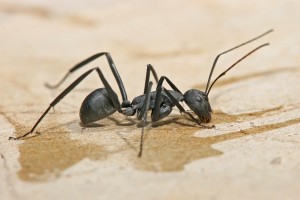
Carpenter ants burrow into wood and create a network of tunnels and nests. [PIC] But the ants aren’t actually eating the wood as they chew through it. Instead, they prefer to eat sweets and meats. Carpenter ants will go after items in your pantry, such as any type of sugar or syrup, or even dog food.
Carpenter ants prefer to create their primary nest in damp wood, as the moisture prevents the eggs from drying out. Satellite tunnels that support worker ants may be located in dryer wood. The areas around sinks and bathtubs are especially prone to carpenter ant infestation. Their tunneling activity weakens the integrity of the wood in your home.
Eradication: Find the nest by following the worker ants to see where they go. [PIC] Sawdust often appears below the entrance to the nest, and you can also listen for a rustling noise after tapping on the suspected wall of the nest.
Once the nest has been located, a couple different types of insecticides can be used to kill the ants. Note that some insecticides are not available to the public, so you may need to contact a pest control expert to safely and thoroughly eradicate the ants from your home. This is particularly true if the nest is not fully exposed.
Aerosol or foam sprays can be used on nests that are completely exposed. Alternatively, baits can be used to lure the ants to a toxic food source.
Prevention: A pest control professional can also come to your home to spray a residual insecticide around your home’s foundation, which should prevent any ants from entering. Cut back tree branches that touch your home, as these can serve as entry points for ants that can’t enter via the ground thanks to the insecticide spray. Promptly replace any damp wood and seal the area to prevent water leakage. This will discourage ants from building nests. Keep stacks of firewood dry and lifted off the ground.
Carpenter Bees

Carpenter bees are solitary bees and don’t swarm in hives, preferring instead to bore a series of tunnels into wood that lead to a nest. If you’ve ever seen a perfectly round circle in a fence post or other wooden structure, you’ve seen the entrance to a carpenter bee nest. [PIC] That one round hole doesn’t seem like much, but the bee has actually hollowed out a large portion of the wood within.
Carpenter bee damage doesn’t happen overnight, but rather over the course of several years. The bees overwinter in their nests and use the same ones year after year, chewing new tunnels as necessary.
Eradication: Once a carpenter bee nest has been located, an insecticide can be applied to the entrance. Leaving the nest site open for a few days ensures that the bee will come in contact with the insecticide. Once the resident bee has been killed, it’s important to seal the nest to prevent other bees from overwintering inside or from taking over the nest on a permanent basis. [PIC] Before sealing the nest, use an insecticide inside the nest in order to kill any larvae that may emerge. Consider replacing wood that has harbored nests for several years.
Prevention: Treating all wooden surfaces with an insecticide is ineffective and impractical, as the treatment does not last long enough to have a serious effect on the bees. If you do wish to treat the wood, try doing it every few weeks in the early spring, when the bees are actively drilling new nests. It’s also believed that bees avoid wood that has been painted or stained, so keep exposed wood in tip-top shape with a fresh coat of paint as needed. Otherwise, regularly inspect wood for that tell-tale dime-sized circle and then follow the eradication steps above in order to stop carpenter bees from becoming a major problem.
Powderpost Beetles
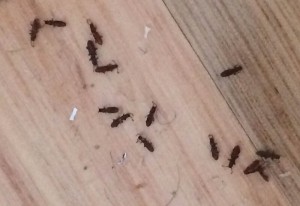
Powderpost beetles consume wood and also use wood pores as natural cavities in which to lay their eggs. Unlike some types of wood boring beetles that only infest live wood, powderpost beetles are known for infesting wooden furniture and wooden decorations around the home. They are most likely to attack hardwoods like walnut, oak, hickory, ash and mahogany.
Look for their characteristic oval exit holes in molding along the floor or ceiling, in door frames, in cabinets, in picture frames or even in hardwood flooring. [PIC] Note that exit holes do not necessarily mean that there is a current infestation. The beetles will make noise that can be heard through a stethoscope-like tool, and a pest control professional can help you identify an active infestation. There may be a soft powder under the exit holes in an active infestation as well.
Eradication: The best way to eradicate powderpost beetles is to remove and replace any infested wood. A pest control professional can also inject a liquid insecticide into the tunnels where the beetles feed. Note that adults can lay eggs in nooks and crannies throughout your home, so if the infestation is severe, a thorough application of insecticides may be warranted. Fumigation is usually reserved for only the most severe cases of powderpost beetle infestation.
Prevention: When building a new home, ensure your timber is kiln-dried before construction in order to kill any powderpost beetles and larvae that may be inside the wood. Take care to inspect furniture and firewood for signs of powderpost beetles before bringing them into your home, as they could harbor the insects or their larvae.
Termites
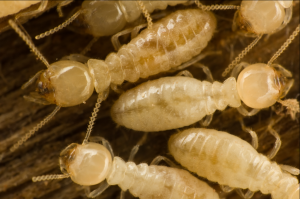
Termite colonies devastate wooden structures by consuming all the inside wood fibers and leaving a thin husk of wood intact on the outside. This intact outer layer can deceive homeowners into thinking they don’t have a termite problem, but other signs to look for include mud tunnels, piles of termite wings or swarms of termites themselves. [PIC]
Eradication: Insecticide sprays are commonly used to eradicate and prevent termite colonies. The spray serves as a chemical barrier and can last up to five years, making it a very appealing and effective solution. [PIC] The other common termite extermination method is baiting. Termite baiting is a complex process, so you’ll want to consult with a professional before trying it.
Prevention: Termites actually live in the soil and come up to eat, so it’s important to keep wood up off the ground by at least 12 inches, including your home’s foundation. It is also helpful to cover the soil in your crawl space with plastic sheeting. Termites are attracted to water, so fix any leaks, both inside your home and out.
When Wildlife Moves Into Your Home
Animals are opportunistic and—just like people—prefer to do things the easy way. For some critters, this means using your home as a ready-made shelter. Unfortunately, wild animals don’t make great roommates.
Here’s a look at the most common wild animals that invade our homes, the damage they can incur and steps that can be taken to evict these squatters or to prevent their entry in the first place.
Bats
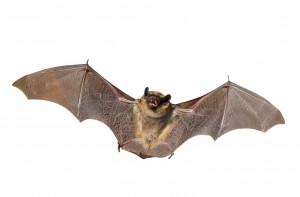
Bats aren’t bad to have in the neighborhood—they eat a lot of mosquitoes, after all—but they might move into your house if your attic, walls or chimney seem like an advantageous place to live. And in a bat’s mind, the best living spaces are dry, warm and well away from predators’ hiding places.
Eradication: It is illegal to kill most bat species in the U.S., so always opt for non-lethal removal methods when unwelcome bats are nesting in your home. To eradicate bats, their point of entry needs to be determined first. Look for brown stains or bat droppings high up on the exterior wall of your home or on your roof. You should be able to find an entry point above the guano. [PIC] You may or may not see bats at the entrance during your investigation.
The next step is to set up an exclusion barrier over the entry point. This is a device that allows bats to exit the nest but not to fly back in. [PIC] Once the entire colony has exited the nest, clean out the guano and seal it completely.
Evicting bats from your home sounds straight-forward, but due to the sheer number of nooks and crannies bats can escape into, it’s anything but. If bats are living in your home, team up with a professional to get them out.
Prevention: Bats can enter your home from a space as small as three-eighths of an inch, and your job is to make your home impenetrable. Use sealant to close gaps, steel bolts to tighten loose trim or netting to cover a tile roof. Bats typically nest at least 8 feet off the ground, so this is where you should focus your efforts. However, don’t discount entry points closer to the ground.
Birds
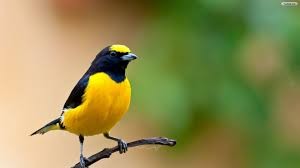
Just a single bird scratching around in your attic can cause enough racket to keep you awake at night. Birds can also spread diseases through their droppings, which can also cause respiratory harm, and they can harbor mites and lice. Having a bird take up residence in your attic also means that predators will be attracted to the location, such as snakes or raccoons. It’s best to act swiftly at the first sign of a feathered intruder in order to remove them and/or block their return before they build a nest and lay eggs.
Eradication: A humane trap (like those commonly used with raccoons, etc.) baited with birdseed is the easiest way to trap and remove a bird from your attic. [PIC] Note that birds’ bones are very delicate and if they become distressed in any kind of trap, they could break a wing. Check traps often to prevent this.
Prevention: Before the mating season begins in the spring, inspect all vents around the exterior of your home. Vents can serve as access points into your attic or in some cases can be used as the nesting site itself. All vents should be made of a durable metal or plastic with openings no larger than half an inch by half an inch, and they should be completely enclosed. Special vent covers are made for dryer vents and sewer vent pipes so that the vents can still function safely but birds and other animals are unable to enter. [PIC]
Larger Animals: Possums, Raccoons, Skunks
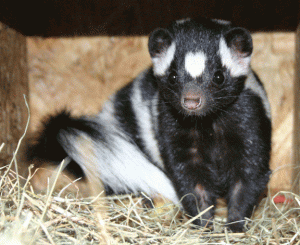
Larger nuisance animals—most commonly possums, raccoons and skunks—are attracted by the smell of food waste on your property. If they nest in your attic or crawl space, the smell of their feces can be overwhelming. They can also carry parasites and destroy insulation. In rare cases, they can even carry rabies.
Eradication: Humane traps and exclusion doors are an effective way of removing a possum, raccoon or skunk from your attic or crawl space. [PIC] You may need to check for babies in the area—including down the walls—if it is mating season. Any babies that are separated from their mother will die, resulting in a persistent foul odor.
Prevention: Possums, raccoons and skunks are not likely to force entry into your home, which means they’ll only get inside if there is a convenient opening large enough for them to crawl through. Seal up the exterior of your home, especially around the roof and the basement, and these larger animals will not give your home a second thought. Keep all trash cans tightly secured to keep raccoons and skunks out of the area, since both species can survive exclusively on food scraps in your garbage. [PIC] If you feed your cats or dogs outdoors, remove any uneaten food each day.
Rodents

Although you’re most likely to imagine mice or rats living in your house, squirrels, chipmunks and voles are other types of rodents that can also take up residence. [PIC] These critters will build nests in isolated areas of your home, detectable primarily by subtle chewing or scratching sounds, chew marks and droppings. They are most likely to venture out at night to find something to eat in your pantry.
Eradication: Trap mice using baited glue boards or other traps. Poisons are not recommended, and neither are so-called mouse repelling sprays or sonar devices. [PIC] Trapping remains the most effective way to remove rodents from your home. You can purchase humane traps, which do not kill the rodents, if you wish to relocate them.
Prevention: To stop rodents from entering your home, fill any gaps around pipes or vents—or any cracks larger than a dime, for that matter—with copper wool. Don’t use foam as a sealant, because rodents can chew through this. Keep all food items securely stored in chew-proof containers, or off the ground. If mice are a perpetual problem on your property, a “barn cat” is an excellent method of control.
Snakes
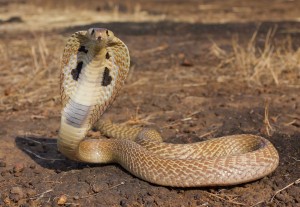
Snakes prefer cool, damp areas, and the crawl space of your house often fits the bill. Most snakes are harmless to people, and the smallest species eat small insects and worms. However, if you have a snake in your home, it may be living there thanks to a rodent infestation, which means you’ll be dealing with a larger snake. Some snakes may enter your home by accident and have no intention of staying.
Because some species of snakes are indeed venomous, take care not to handle or provoke any snakes that you find in your home if you suspect it may be a dangerous species. In fact, in some areas you are required to have a permit in order to handle or relocate a venomous or endangered snake. If in doubt, always call a professional for assistance.
Eradication: To trap a snake inside your home, you can use glue traps or funnel traps. [PIC] Funnel traps work by making it easy for the snake to enter the baited trap but impossible for it to leave. Glue traps are sticky boards that are baited to attract the snake. The snake will stick to the board and you can safely move the board and the snake outside. Pouring vegetable oil on the snake will dissolve the glue, allowing the snake to go free in a more suitable environment. Glue traps will trap anything and everything, however, so you absolutely must check the boards often and keep pets and children away.
Prevention: To ward off snakes, make your house as unappealing to them as possible. Seal any openings to your crawl space that are more than a quarter of an inch wide. Remove any rodents that have taken up residence and keep all potential food sources (such as bags of dog food or bird food) off the ground and/or in a snake-proof container.
A snake-proof fence can be erected around an area if snakes are a threat, such as around children’s play areas. [PIC] The fence is installed at a 30 degree angle, which makes it very difficult for snakes to climb over it, and also extends underground. Another method is to attach aluminum sheeting to the bottom of an existing fence (and to also bury it underground) to eliminate any gaps that a snake could crawl through.
Small Pests That Carry a Big Health Risk
Damaging your home is one thing, but damaging your health is quite another. From allergic reactions, rashes and even poisonous stings, these pests can make you downright miserable. Because most are microscopic, you won’t know you have an infestation until you’re already itching and scratching or sneezing and coughing. And for the larger hazards, like poisonous spiders and scorpions, knowing what to do when you encounter one is paramount for your safety.
Bed Bugs
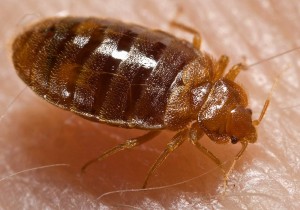
Bed bugs are like microscopic vampires, coming out at night to suck your blood. Ugh! If you wake up with red itchy spots, you may have been a bed bug’s dinner. [PIC] You might accidentally bring bed bugs home with you after a trip to a hotel or even to the movie theater.
Eradication: Complete bed bug eradication requires vigilance and attention to detail. These bugs can hide anywhere but are most likely to be found in your bed room, in your mattress and on your headboard. [PIC] All bedding will need to be deep cleaned, your mattress must be vacuumed and sprayed with a special insecticide, and all bed bugs on your bed frame must be killed as well. Entire books have been written on the subject, and for the best chance of complete extermination of bed bugs, consult a professional.
Prevention: Bed bugs can sneak into your home in many ways, but there are a few ways you can discourage an infestation. Encase your mattress in a special cover, which gives bed bugs less places to hide. [PIC] Thoroughly inspect all used furniture for bed bugs before you buy it and/or bring it home. Vacuum diligently and run laundry through a high heat cycle in the dryer if you suspect you may have recently come in contact with bed bugs.
Cockroaches
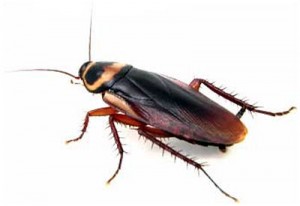
Cockroaches are big, ugly bugs that go hand-in-hand with unsanitary conditions. [PIC] Cockroaches are not only a sign that some serious cleaning needs to be done, but also spread diseases. No matter how you look at it, a cockroach infestation is not good.
Eradication: After cleaning up the area to eliminate the roaches’ food and water sources, set out bait traps. These traps will kill the cockroaches, but it can take a couple of weeks for the entire population to be exterminated, in order to account for newly hatched cockroaches. [PIC] Insecticide sprays can also be used to target individual roaches or to spray the nest.
Prevention: Keep your house clean, especially areas where food is prepared or stored.Food should be stored in air-tight containers to keep out roaches, the trash should regularly be taken out, and the floor should be mopped clean of any spills or crumbs. Fix any water leaks that could be serving as a source of water for the roaches.
Dust Mites
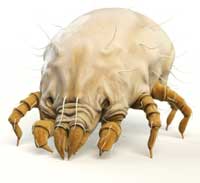
Dust mites cause agonizing allergies for some people and can even aggravate other respiratory conditions like asthma and hay fever. Dust mites eat human skin cells, which means they thrive in places like your mattress, furniture and clothes. [PIC]
Eradication: Unfortunately there is no way to completely eradicate dust mites from your home. Insecticides have no effect on dust mites. You can manage their population, however, and guard against a severe allergic reaction. It’s actually dust mite feces that cause allergies. Regular vacuuming and laundering helps decrease the amount of allergen in the environment, but it’s a constant battle.
Prevention: Rip up carpets—especially in bedrooms—and replace with a flooring that is easier to clean, and clean it regularly. Wash all bedding, curtains and jackets in hot water at least once a week, and vacuum all furniture at least twice a week.
Dust mites prefer humid environments, so use a dehumidifier to keep humidity below 50 percent. Wipe dust off of all surfaces with a damp cloth in order to trap the allergen rather than spread it around. [PIC]
Fleas
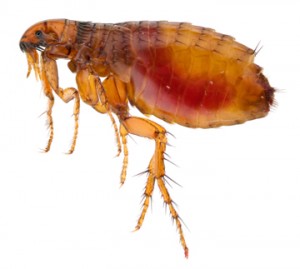
You don’t have to own a dog or a cat for fleas to invade your home, but it’s far more likely to occur if you do. The trouble with fleas is that you won’t notice an infestation until it’s far too late, because the reproductive cycle will already be under way and flea eggs will already be lurking in your home. [PIC] Fleas cause irritating bites, and you can even feel the fleas moving on your skin. What’s more, some people have allergic reactions to flea bites, and fleas can pass diseases on to you or your pets.
Eradication: Start your pets on a flea treatment and continue it for at least 3 months in order to break the fleas’ reproductive cycle. With a mild infestation, simply vacuum and clean all bedding at regular intervals. Severe infestations may require the use of pesticides in your home. It’s advisable to seek the help of a professional to do this safely.
Prevention: To prevent a flea infestation, keep your pets on a regular flea prevention regimen as recommended by your veterinarian. Inspect your pets frequently for signs of fleas—you’ll either see the fleas themselves or “flea dirt” on your pet’s skin. Maintain good housekeeping practices to prevent flea eggs from hatching in your home.
Scorpions
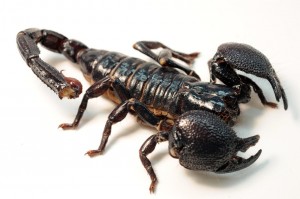
Scorpions are typically found in the southwest region of the U.S., but they are capable of living in surprisingly diverse climates. Only the bark scorpion has a sting powerful enough to harm a human, and if one stings a child, pet or immunocompromised individual, the results could be fatal. Of course, avoiding all scorpion stings—whether venomous or not—is ideal.
Eradication: Scorpions are notoriously resistant to insecticides thanks to their protective exoskeleton. However, their exoskeleton also makes them easy to locate for extermination because it glows under black light.
As an alternative to hunting out and killing scorpions one by one, you can use glue boards to trap scorpions. Remember to check glue boards often and to keep them away from pets and children.
Prevention: Thoroughly sealing the exterior of your home is of the utmost importance in preventing scorpions from coming inside. Scorpions can slip through the smallest of cracks, so you’ll need to take your time and go over every inch. Regularly inspect for new cracks and promptly seal them.
Remove anything that may attract scorpions to your home in the first place. Scorpions eat insects, so stay on top of general pest prevention or eradication efforts. Take care to remove any piles of rubbish near your home where scorpions may like to hide during the heat of the day.
Spiders
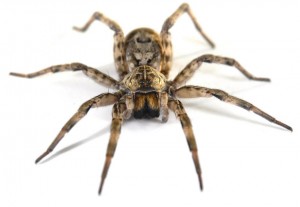
There are a couple species of spiders in the U.S. whose bites are particularly dangerous. Know which kinds of poisonous spiders live in your area, and be prepared to take immediate action if you find one in your home.
The two species in the U.S. considered venomous are the brown recluse spider and the black widow spider. [PIC] The brown recluse prefers to stay in dark, hidden places, whereas the black widow will spin a web in the shelter of virtually any structure. While it’s rare for a bite from either spider to kill an adult, they can make you very ill, and children and pets are most at-risk for a severe reaction.
Eradication: In general, it’s easy to vacuum up spider webs when you come across them. Individual spiders can be sprayed with an insecticide or squashed with a shoe when encountered.
Use glue boards to trap spiders and other insects (be careful to keep these away from pets and children though, as they are very sticky). [PIC]
If there are cracks and crevices where you suspect a brown recluse could have its nest, a powdery insecticide can be sprayed into the area. Note that insecticides are only effective on spiders via direct contact.
Prevention: The most effective way to keep all spiders out of your home, including brown recluse and black widow spiders, is to create an environment that is unappealing to them. Brown recluse spiders like to hide in dark places, which means they’re most likely to be found in basement areas, piles of newspapers, piles of clothing, etc. Keeping things tidy will reduce the occurrence of brown recluse spiders. [PIC]
Brown recluse spiders are more active at night, when you’re likely to be in bed. To make it harder for spiders to get into your bed, move the bed away from the wall, do not store anything under the bed and do not let bedding touch the floor.
To prevent being bitten by a black widow, always wear shoes when outside and wear gloves when gardening or otherwise working outside. Look carefully for webs that you might walk into, such as when entering a garage. Shake out clothing or shoes that have not been worn recently and store them off the ground.
A general insect prevention regimen will also reduce the spider population in your home since spiders feed on insects. Prevent other insects from getting inside, and spiders will have no interest in coming in either.
Wasps

Wasps don’t like to be hassled in any way, and some species have a nasty habit of ganging up on their victims to inflict dozens of stings. [PIC] This can become a medical emergency for anyone allergic to wasp stings, as they can induce the life-threatening condition anaphylaxis. No matter where you encounter a wasp nest, it’s in your best interest to have it removed.
Eradication: Before attempting any kind of removal effort, fully protect yourself by covering all exposed skin. Wear a face net that covers your neck and shoulders. Getting stung by a wasp (or dozens) is not fun, to say the least. If you’re unable to wear the right kind of protective clothing or otherwise safely remove a nest yourself, call a professional.
Nests that are in the ground can be covered with a clear, heavy bowl for several days.
Nests that are located on a wall should be quickly covered with a cloth bag, sealed tightly and put into a bucket of water. Place a brick or heavy stones on top of the bag to keep it in the water. [PIC] Do not try to flood a nest with water unless it has been contained in a bag, as the wasps will simply become agitated and more likely to sting. The same goes for trying to burn a wasp nest: don’t do it.
Nests located inside wall cavities should be dealt with by a pest removal expert so that you don’t accidentally drive the wasps further inside your home.
Prevention: Wasps are territorial and do not like to build nests near other wasp nests. You can take advantage of this natural tendency by setting up a fake wasp nest. [PIC] Wasp traps are also commercially available, although they are simple enough to make at home as well. Finally, try to remove food sources such as garbage, compost areas or fruit that has fallen from trees, as wasps will be more likely to create nests near convenient food sources.
Other Pests That Cause Aesthetic Damage
While not likely to cause structural damage or to cause health concerns, some tiny pests can infiltrate your home and cause aesthetic damage. You could wind up spending hundreds of dollars to repair the destruction they leave behind if you don’t get the problem under control.
Carpet Beetles and Clothes Moths
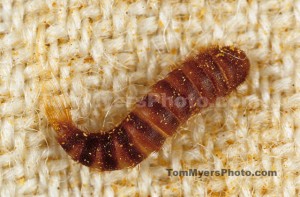
Carpet beetles and clothes moths inflict the same kind of damage on clothes and other natural (non-synthetic) fibers, so it’s difficult to tell which of these pests is in your home. [PIC] Anything made from wool, silk, horsehair, plant fibers, etc. is at risk if carpet beetles or clothes moths come into your home.
Eradication: If possible, items clearly infested by carpet beetles or clothes moths should be removed from the house and cleaned, treated with a pesticide or simply thrown away. Thoroughly clean the surrounding area where the item was stored too. An insecticide can be applied to the area. Look carefully for any other areas in your home that may be harboring another infestation.
Prevention: Store clothes made from animal fibers in an air-tight container along with moth balls. Replace the moth balls regularly to ensure the vapors are strong enough to deter any carpet beetles or clothes moths. [PIC] Before packing these clothes away, have them dry cleaned so that you can be sure no eggs or larvae survive. Alternatively, take clothes outside and brush them every couple of months to dislodge eggs or larvae. This method also works well with rugs and furniture or other bulky items.
Silverfish / Firebrats
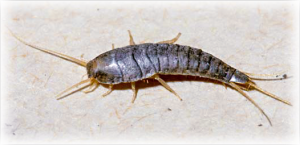
Silverfish (and their relatives the firebrats) look strange but are mostly harmless. [PIC] They like to chew on paper and other starches, so if you have a group of silverfish in your home, you might see damage on books, files, cardboard boxes and even clothing. They reproduce quickly, like to hide in dark places and can move quickly to evade notice, so their population can get out of hand before you realize there is a problem.
Eradication: Silverfish and firebrats can be caught using glue traps or exclusion traps baited with a starchy food. These traps are most effective if just a couple of silverfish have come inside, but they won’t keep down a larger infestation. A pest control expert will be able to spray around the foundation of your home to prevent further entry, and will also devise an effective extermination plan.
Prevention: Store things in your pantry in air-tight jars rather than in their original cardboard containers. If you store things in cardboard boxes in your basement or attic, move everything into secure plastic storage containers. [PIC] Avoid piling newspapers or junk mail. Silverfish will also also go after clothes and linens, especially if they are kept in a dark, damp area, so store them elsewhere if you’ve noticed silverfish damage.

